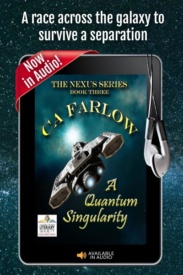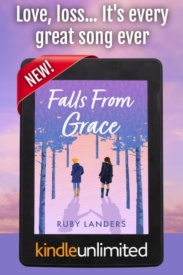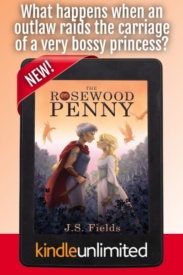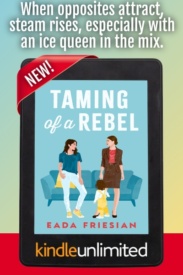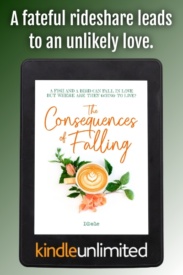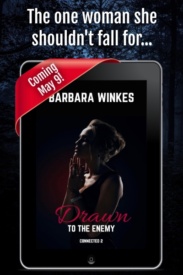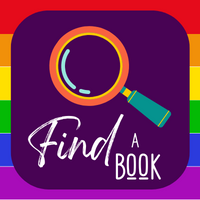 Authors need to learn what works best for them.
Authors need to learn what works best for them.
Today Virginia Black is here to share her expert advice. TB & Miranda had the pleasure of meeting Virginia at GCLS last summer.
This is Part 1 of Virginia’s series.
Take it away, Virginia!
Checklists For Writers, Part 1: Your First Draft
When I first started writing, I researched the “best” ways to practice the craft. Like many, I took advice from Stephen King’s On Writing and many others and treated their words like gospel.
I failed more than I succeeded.
Write every day. Nope. I went months without scribbling a word.
Create a practice of writing at the same time each day. No way. Not with a kid in the house. I wrote in the morning, at lunch, late at night—whenever I had a few minutes to spend with the voices in my head.
Write one hundred words or five hundred words or five hand-written pages. No, not a chance, no way. The spigot flowed at its own whim.
Turns out I should have considered their advice as suggestions and not laws to be obeyed. Once I did—once I gave myself permission to find the methods that worked for me, the words flowed better.
Too many writers suggest the best ways of writing without mentioning the caveat that those are the best ways for them. Your miles and mine may vary. Only time and practice will reveal what works best for you, and until then, all advice is suspect.
That said, I have found a few things that work for me, and hidden among them may be a kernel or two of truth for your writing process. In this series, I’ll talk about how I approach my first draft, how I edit my work, and how I revise to complete a manuscript.
The first draft—the zero draft, the vomit draft, the brain dump draft—has few rules. Its only purpose is to begin the process of writing, to take you from “no words” to “some words” on a page, because you can’t edit what you don’t have.
This draft is for you and you alone. You’re telling yourself the story, throwing everything on the page without editing or second-guessing. I never write and edit at the same time—I’ve found it kills my flow, so I shove my inner critic and my inner editor into a box and bury them (though I don’t forget where, because I’ll need them later).
The goal with this draft is to get all the voices and images out of my head and onto the page. I’m not checking for continuity, and I don’t care if it doesn’t make sense because it’s too soon in the process to worry about that.
For several years now, I’ve “competed” in National Novel Writing Month (NaNoWriMo) in November, where the goal is to finish a 50,000-word novel draft in thirty days. Some people love it; others hate it, and no matter where you fall on that spectrum, I’m not here to change your mind.
I’m a big fan, however, because the challenge taught me the importance of separating writing from editing, and of getting those first words on the page regardless of their quality. If I give myself the freedom to write utter garbage, to write things that don’t make sense to anyone but me, it releases my creativity, and I can successfully act as a conduit for the story to get from my brain to my laptop.
Whatever it takes to get those words down is fair game, and I don’t stop until the words cease to flow or until the story is (for the time being) done. All I have to remember are a few simple rules.
Give them a try:
1) Get as much of the story down as you can. All the voices that haunt you when you’re trying to sleep or conveniently visit you in the shower. All the notes you’ve scribbled on napkins or scratchpads or stored in your phone. All the scenes you’ve imagined that thrill you. Write them all down.
2) No editing. No critiquing. No second-guessing yourself. Are you good enough? Yes, because you’re writing. Are you really a writer? Yes, because you’re writing. If you’re writing words—even if it’s only a few words at a time—congratulations! You’re only allowed to champion yourself at this stage. Compliments only!
3) If you get stuck or can’t help yourself, check for gaps and try to fill them, but don’t pull your hair out trying to complete the story. If you’re still stuck, leave things just the way they are. Jump around from place to place in the story, or forwards or backwards in your timeline. Write non-linearly if it keeps the words flowing.
4) When you’re done, when the words don’t flow anymore or you’ve made it all the way to “the end”, then pat yourself on the back. You did it! But be sure to keep this draft to yourself. Don’t send it to anyone yet. And don’t cut anything!
5) Close the file or stash the printout or hide the stack of notepads, and don’t look at that draft for at least six weeks. If possible, leave it for three months or longer. The more distance you have, the more you may be able to clinically approach the story when it’s time for revision.
Next time, I’ll talk about how I approach each individual scene, as well as the editing passes that smooth out the story. Until then, happy writing!
Recommended reading:
No Plot, No Problem by Chris Baty (even if you never participate in NaNoWriMo)
On Writing by Stephen King
Save The Cat by Blake Snyder (even if you’re not writing a screenplay)

Virginia Black writes women-loving-women fiction with angsty protagonists. She lives in the Pacific Northwest with her gorgeous wife and smart-assed teenaged daughter. Her works include the short stories “Season Finale” and “Love Undaunted” in the Sapphire Books FANDOM TO FANTASY series, “Constant” in the GCLS Writing Academy anthology WRITING FREEDOM, and “Reclamation” in the Bold Strokes Books anthology “IN OUR WORDS – Queer Stories from Black, Indigenous, and People of Color Writers”.
Virginia is a graduate of the GCLS Writing Academy. Her first novel, CONSECRATED GROUND, featuring a badass vampire hunter of rakish beauty, will be published by Bywater Books in February 2023.
Learn more at virginiablackwrites.com.








